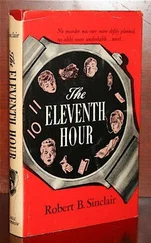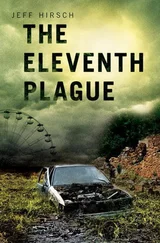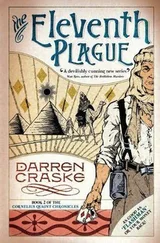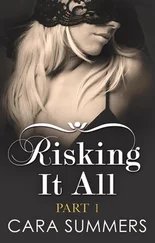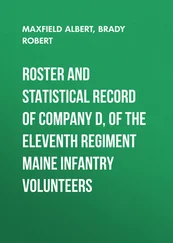Anthony Summers - The Eleventh Day
Здесь есть возможность читать онлайн «Anthony Summers - The Eleventh Day» весь текст электронной книги совершенно бесплатно (целиком полную версию без сокращений). В некоторых случаях можно слушать аудио, скачать через торрент в формате fb2 и присутствует краткое содержание. Жанр: Старинная литература, на английском языке. Описание произведения, (предисловие) а так же отзывы посетителей доступны на портале библиотеки ЛибКат.
- Название:The Eleventh Day
- Автор:
- Жанр:
- Год:неизвестен
- ISBN:нет данных
- Рейтинг книги:3 / 5. Голосов: 1
-
Избранное:Добавить в избранное
- Отзывы:
-
Ваша оценка:
- 60
- 1
- 2
- 3
- 4
- 5
The Eleventh Day: краткое содержание, описание и аннотация
Предлагаем к чтению аннотацию, описание, краткое содержание или предисловие (зависит от того, что написал сам автор книги «The Eleventh Day»). Если вы не нашли необходимую информацию о книге — напишите в комментариях, мы постараемся отыскать её.
The Eleventh Day — читать онлайн бесплатно полную книгу (весь текст) целиком
Ниже представлен текст книги, разбитый по страницам. Система сохранения места последней прочитанной страницы, позволяет с удобством читать онлайн бесплатно книгу «The Eleventh Day», без необходимости каждый раз заново искать на чём Вы остановились. Поставьте закладку, и сможете в любой момент перейти на страницу, на которой закончили чтение.
Интервал:
Закладка:
Firefighter Dean Beltrami saw “the entire facade starting to buckle … Nobody said anything. We just turned and ran.” EMT Jody Bell saw the tower “looking like it was going to tip, and there was a piece of the building coming down right on top of me … The building was hitting other buildings … This time it was worse … We were just running … I was damn near ready to jump in the river … The debris went well into the Hudson. It almost went to Jersey.”
“I opened up my eyes,” said EMS chief James Basile, “dust and dirt, debris … total darkness, I guess for about two, three minutes. I thought, ‘I guess this is what it’s like to be dead.’ Then I heard a woman screaming.”
“This beautiful sunny day now turned completely black,” said Chief Pfeifer, who survived the fall of the tower. “We were unable to see a hand in front of our faces. And there was an eerie silence.”
The 110-story North Tower had become a pile of flaming, noxious rubble—like its twin before it, in about twenty seconds.
THE SILENCE WAS BROKEN by the high-pitched tones of locator alarms, the devices that are triggered when a firefighter goes down and does not move. Three hundred forty-three men of the New York Fire Department would never move again.
The number of firefighters killed on 9/11 was almost a third of the total killed since the department’s inception in 1865.
Chief Ganci had been killed near the North Tower, and his body was one of the first to be found. Chief Pfeifer’s brother Kevin would be found dead in the rubble, his fireman’s pick at his side. Firefighting runs in families in New York, and fathers and sons, brothers and in-laws, would search for fallen comrades and kin for months to come.
Thirty-seven Port Authority police officers, including their superintendent, Fred Morrone, had died. Five of their bodies were found grouped around that of a woman in a steel chair, a device used to carry the disabled. They had died, it seemed, trying to carry her to safety.
The New York Police Department lost twenty-two men—and one female officer. She had brought an injured person out of the South Tower, only to be killed when she went back in to help another.
“THE NUMBER OF CASUALTIES,” New York mayor Rudolph Giuliani said, “will be more than any of us can bear.” Government officials would at first suggest, in a serious overestimate, that as many as seven thousand people had been killed in the city. The death toll was nevertheless stunningly high.
The number of fatalities in New York was eventually to stand at 2,763. That figure included the people in or near the Twin Towers, the passengers, crew, and hijackers aboard the two flights that crashed into the complex, and firefighters, police, paramedics, and other emergency workers. The highest number of casualties was in the North Tower—1,466, the majority of them above the point of impact—followed by 624 in the South Tower, all but 6 of them above the point of impact. One hundred and fifty-seven people died aboard the two planes.
Rarely mentioned, if at all, is the fact that this was not exclusively an American catastrophe. Five hundred and eleven nationals, perhaps more, from more than two dozen other countries, died in New York. They included dozens of Hispanic immigrants, delivery men, cooks, and dishwashers, with no work permits. They are almost all nameless now, remembered on no memorial.
THE TRADE CENTER COMPLEX rapidly became known as Ground Zero, for good reason. Assault by airplane had transformed it in an hour and forty-two minutes from iconic landmark to sixteen-acre wilderness. “All that remained standing,” wrote Atlantic Monthly correspondent William Langewiesche, “were a few skeletal fragments … vaguely gothic structures that reached like supplicating hands toward the sky. After the dust storms settled, people on the streets of Lower Manhattan were calm. They walked instead of running, talked without shouting, and tried to regain their sense of place and time. Hiroshima is said to have been similar in that detail.”
The towers had thrown mighty shards of steel and rubble to the ground and—such was the force involved—beneath it to a depth of thirty feet. Vehicles on the surface were flattened, power and telephone systems crippled, subways and watercourses severely damaged. Even before the collapse, plummeting rubble devastated nearby buildings.
The lesser giants of the complex had been known by numbers. Trade Center 3—the Marriott Hotel—was now wreckage. Great chunks of debris had fallen on Trade Center 7, which collapsed into its own footprint in the late afternoon. Trade Center Buildings 4, 5, and 6 suffered serious damage and were later demolished. Eight more structures, including World Financial Center 2 and 3—American Express—the Winter Garden pavilion, Bankers Trust, a City University of New York building, and Verizon Communications, were damaged but not beyond repair. Tiny St. Nicholas Greek Orthodox Church, in the shadow of the South Tower, had been flattened.
The attackers had succeeded in stopping the engine room of America’s economy, if only briefly. Damage to Verizon Communications, gored by Building 7’s fall, crippled the electronics that connect the financial markets to the New York Stock Exchange. Exchange chairman Dick Grasso delayed opening the market, then closed it as the strikes escalated. It would not open again until the start of the following week.
Unlike the New York Stock Exchange, located at a relatively safe distance from the Trade Center, its cousin the American Stock Exchange was jolted by the second strike. The towers’ collapse left its offices filled with debris and remaining staff—the chairman and the president included—trapped for hours, covered in soot and dust. Seeing the exchange afterward, a leader of commerce would recall loftily, was like “visiting a third world country.”
Its communications cut, NASDAQ’s corporate offices closed. The New York branch of the Federal Reserve Bank was evacuated, not without a moment of comedy. The building had never before been left unmanned, and no one present knew how to lock up.
Many key financial figures were far from the decision making on the morning of 9/11. The chairman of the Federal Reserve, Alan Greenspan, was in the air halfway across the Atlantic, returning with colleagues from a meeting in Switzerland, when U.S. airspace closed down. His airplane, like others in mid-flight, had to turn back. Frantic calls to the White House eventually got Greenspan back to Washington courtesy of the military, part of the way aboard a U.S. Air Force tanker.
The minders of the American economy wrestled for days with problems ranging from sustaining liquidity to averting the nightmare scenario—potential public panic if the cash at ATM machines ran out, which in turn might spark a run on the banks. New York City, meanwhile, faced the daunting costs that had been inflicted in less than two hours. Reporting a year later, New York’s comptroller would calculate the economic cost to the city at between $83 and $95 billion.
ON 9/11, after the second collapse, there was at first a long, empty moment, a vacuum in time. Then the start of an epic, heartrending, recovery operation.
NINE
“AMBULANCES GOING THIS WAY, ESU TRUCKS FLYING DOWN THE street … Nobody had any idea what was going on. Where is the command post? Where is staging? We had no radio … You looked where you thought the buildings should be, and if they were there, you couldn’t see them … disorientation … I had already seen my third skyline in forty minutes.”
Fire Department lieutenant Michael Cahill, on the period after the second Trade Center collapse. A time of “absolute panic … absolute panic … Most of us were just too tired … out of it … disorganized … Stuff in our eyes, cuts, bruises, equipment lost. Half the people we came with were lost.”
Читать дальшеИнтервал:
Закладка:
Похожие книги на «The Eleventh Day»
Представляем Вашему вниманию похожие книги на «The Eleventh Day» списком для выбора. Мы отобрали схожую по названию и смыслу литературу в надежде предоставить читателям больше вариантов отыскать новые, интересные, ещё непрочитанные произведения.
Обсуждение, отзывы о книге «The Eleventh Day» и просто собственные мнения читателей. Оставьте ваши комментарии, напишите, что Вы думаете о произведении, его смысле или главных героях. Укажите что конкретно понравилось, а что нет, и почему Вы так считаете.



